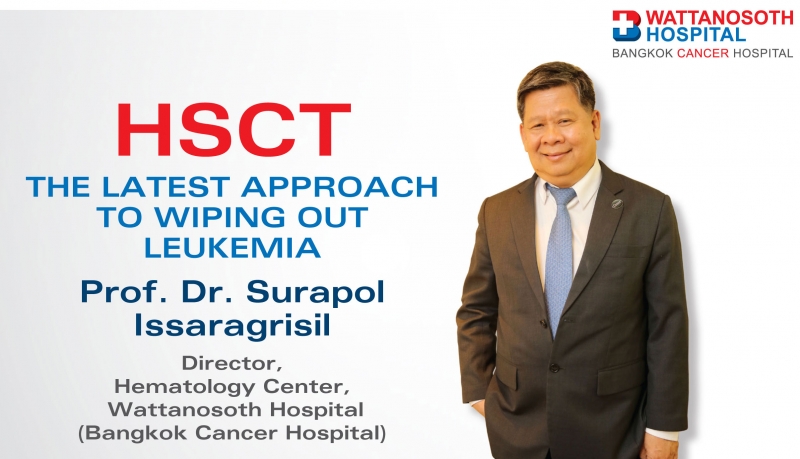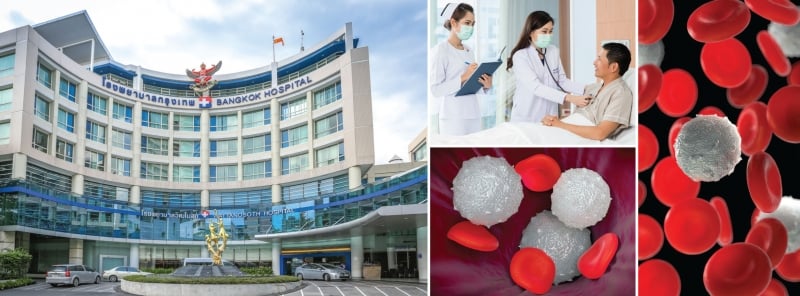Leukemia
Fact

Leukemia occurs when white cell precursors undergo malignant transformation into primitive, undifferentiated cells with abnormal proliferation. These leukemic cells replace normal marrow tissue and hematopoietic cells, causing anemia, thrombocytopenia and leukopenia.
Leukemia is not related to genetic causes and actual causes of the disease are unknown. As such, it is difficult to prevent it. The disease affects bone marrow and blood so it prevents red blood cells, white blood cells and platelets from reaching normal, healthy maturity.
Symptoms
The common symptoms include anemia, infection, easy bruising and bleeding. Other symptoms and signs are usually nonspecific, including pallor, fatigue, fever, malaise, weight loss, tachycardia and chest pain. Such symptoms are attributable to anemia and a hypermetabolic state.
Failure to treat leukemia at an early stage might allow the presence of abnormal cells to increase, resulting in exposure to infectious diseases and excessive bleeding. Without proper treatment, patients with leukemia can lose their life within six months. However, the latest Hematopoietic Stem Cell Transplantation (HSCT) science offers a complete cure for leukemia patients.
Treatment
Prof.Dr. Surapol Issaragrisil, Director, Bangkok Hematology Center, Wattanosoth Hospital (or Bangkok Cancer Hospital), explained how HSCT can be an effective tool to treat patients with leukemia.
“After diagnosis, patients undergo remission induction therapy with chemotherapy during the first three to four weeks as the first round of treatments. This is designed to destroy most of the leukemia cells, stop symptoms of the disease, and return blood counts to normal levels. The goal of this therapy is a complete remission (CR), which means that the blood counts have returned to normal, the leukemia cannot be seen when a bone marrow sample is examined under the microscope, and the signs and symptoms are gone.”
However, small amounts of leukemia can remain after the therapy. It is therefore necessary to give post-remission chemotherapy to prevent the disease from coming back, from residual leukemic cells.
HSCT is then implemented soon after all leukemic cells are destroyed to repopulate bone narrow cells.
“HSCT is a medical procedure in which bone marrow that contains leukemia is destroyed and then replaced by hematopoietic stem cells that develop into healthy bone marrow. Hematopoietic stem cells are blood-forming cells found both in the bloodstream and in the bone marrow. These stem cells make all of the healthy cells in the blood.” Moreover, allogeneic graft can have graft versus leukemic effect, resulting in eradication of all leukemic cells.
“With today’s advanced technology, we can get hematopoietic stem cells from a HLA-haploidentical donor who shares, by common inheritance, exactly one human leukocyte antigen (HLA) haplotype with the recipient and is mismatched for a variable number of HLA genes, ranging from zero to five, on the unshared haplotype. Potential HLA-haploidentical donors include biological parents, biological children, and full or half siblings.”
“After treatment, the patient needs to stay in the hospital for 4-6 weeks for recovery. They can get back to their normal life within 3-6 months. The patient requires follow-up appointments every 1-2 months, up to 12 months, then every six months for up to three years after treatment.”
Because leukemia patients are in need of knowledge in all aspects of treatment as well as physical and emotional support from all involved parties, Wattanosoth Hospital arranges public seminars and meetings three to four times a year so that all concerned parties, including doctors, former and new patients and relatives can get together to share knowledge and experiences to build understanding and encourage new patients.
